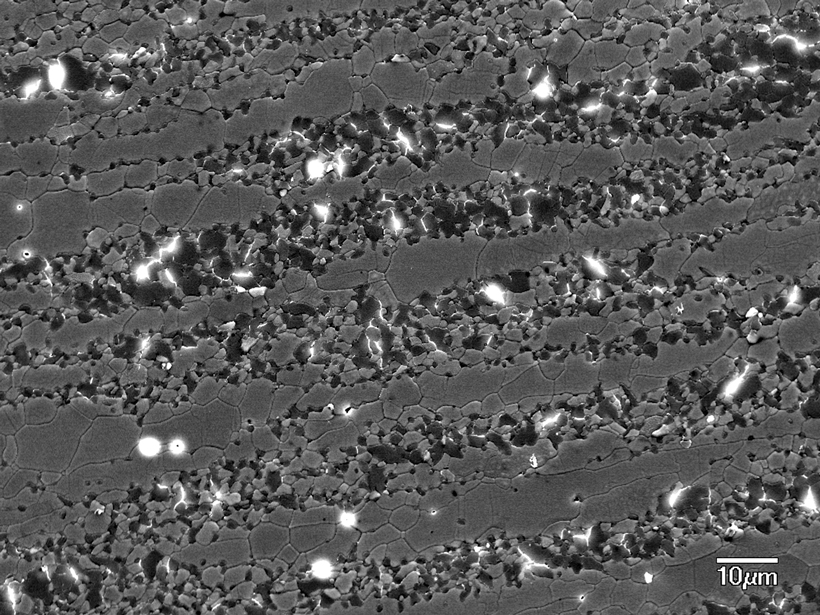Source: Journal of Geophysical Research: Solid Earth
The theory of plate tectonics, which posits that Earth’s lithosphere is broken into a series of rigid plates that are propelled by currents of heat circulating through the taffy-like rocks below, underpins modern geological sciences. Yet the localized weakening mechanisms that form the plate boundaries remain poorly understood.
Because of the presence of regions of very fine grained deformed rocks at many tectonic margins, scientists have argued that a reduction in grain size is a critical step in concentrating deformation into narrow shear zones. Because the grains in these zones are much smaller—and hence weaker—than those in the surrounding material, they appear to provide a pathway for localizing deformation in the lithosphere. But the role the grains’ composition may play in shaping shear zones has been the subject of ongoing debate.
To further our understanding of grain-scale weakening processes in different materials, Tasaka et al. conducted a series of torsion laboratory experiments to examine how mixtures of two minerals commonly found in Earth’s mantle, olivine and pyroxene, respond to increasing strain. The results of the first study indicate that at low strain, the mixture responded in the same way as samples of pure olivine but that at higher strain the mixture’s behavior varied, suggesting this deformation occurred via a different grain-reducing mechanism that operates only in samples containing pyroxene.
According to the results of the companion study, which analyzed changes in the mixed samples’ microstructures, this mechanism is the nucleation of small grains of olivine and pyroxene along each other’s mineral boundaries. As the new crystals begin to form at moderate strain, argue the authors, they restrict one another’s dimensions, effectively reducing the samples’ average grain size. By permanently inhibiting grain growth, this process eventually creates zones of fine-grained material that remain weak over geologic timescales.
These papers provide important insights into the processes that control grain-scale weakening and provide crucial experimental data necessary to test numerical geodynamic models. The mechanism proposed by the researchers may potentially be responsible for forming and perpetuating shear zones and hence the formation of plate boundaries. (Journal of Geophysical Research: Solid Earth, https://doi.org/10.1002/2017JB014333, 2017 and https://doi.org/10.1002/2017JB014311, 2017)
—Terri Cook, Freelance Writer
Citation:
Cook, T. (2017), Probing the grain-scale processes that drive plate tectonics, Eos, 98, https://doi.org/10.1029/2017EO088489. Published on 08 December 2017.
Text © 2017. The authors. CC BY-NC-ND 3.0
Except where otherwise noted, images are subject to copyright. Any reuse without express permission from the copyright owner is prohibited.

